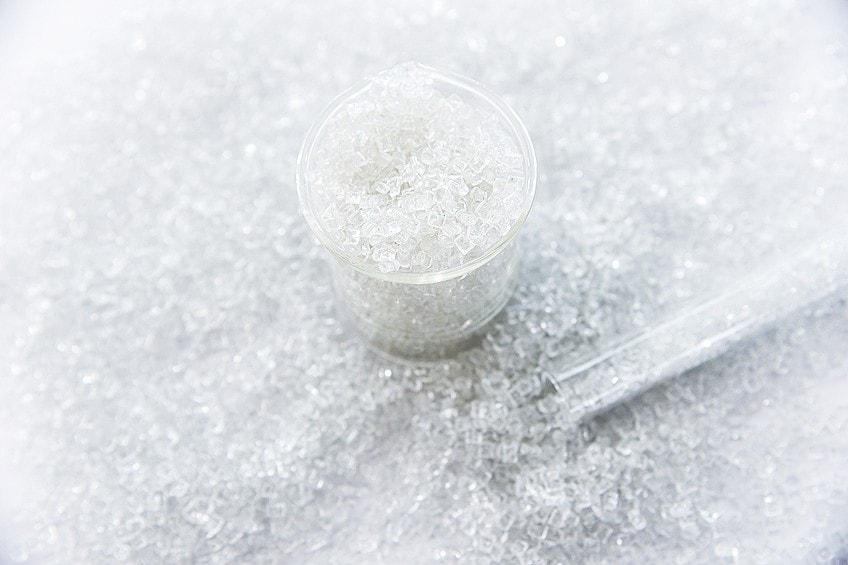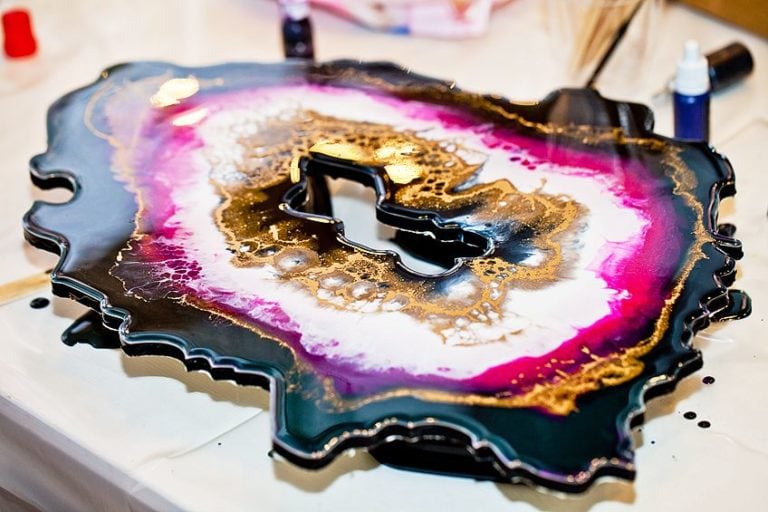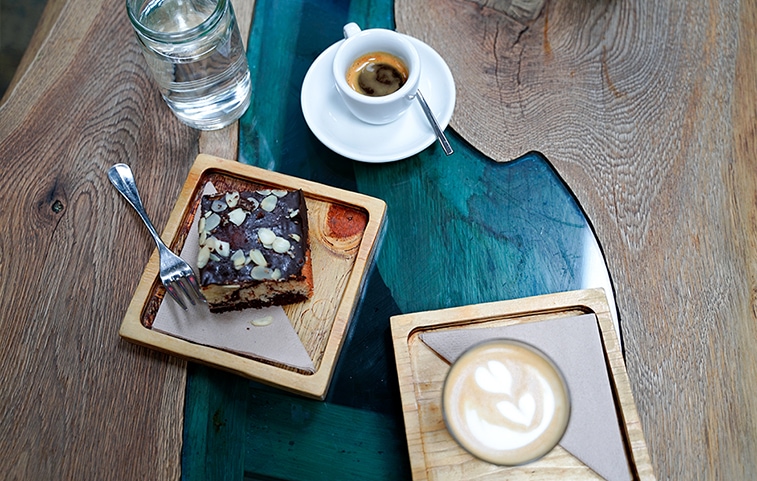Best Polyester Resin – A Guide on Fiberglass Resin
This post may contain affiliate links. We may earn a small commission from purchases made through them, at no additional cost to you.
If you have worked with epoxy resin before, then you will certainly understand and appreciate the beauty of this material as an art medium. While it achieves appealing results, there are two main downfalls of this material. Firstly, it is expensive, and secondly, mixing has to be extremely precise (down to the milligram). Because of these reasons, epoxy resin is not recommended for beginners. If you are looking for an easier alternative, then polyester resin is a great choice. It shares many characteristics with epoxy resin and holds some unique advantages and disadvantages. Let us explore this material a little bit further and learn about how it can be used.
Table of Contents
- 1 What is Poly Resin?
- 2 Polyester Resin Properties
- 3 When to Use Polyester Resin
- 4 Polyester Resin vs Epoxy Resin
- 5 Things to Consider When Buying Polyester Resin
- 6 Equipment Needed for Working With Polyester Resin
- 7 How to Process Polyester Resin
- 8 The Curing Process
- 9 Coloring Polyester Resin
- 10 Safety Precautions for Handling Polyester Resin
- 11 Storing Polyester Resin
- 12 Tips and Tricks for Using Polyester Resin
- 13 Frequently Asked Questions
What is Poly Resin?
Unsaturated polyester resin, also referred to as poly resin, is a material that can create all kinds of fiber composites (known as duroplastic). Much like epoxy resin, this material can be used to create everything from models to swimming pools and watercraft. These duroplastic materials are strong, brittle, and cannot be remodeled after curing.
There are two different categories of poly resins: these are slow curing resins and fast curing resins. Of course, there are many different gradations within these categories. The curing process is important to this resin, as it changes the mechanical and chemical properties of the finished result.
Polyester Resin Properties
What is poly resin made out of? Polyester resin is a synthetic material with properties that vary significantly depending on the different variants at play. These variants include the colorants, filling materials, and where the resin was applied. Poly resins bond very well with fiberglass because they penetrate very well. This provides a strong, water-resistant material that can withstand all outside elements.
Another type of polyester resin is the food-safe version. Food-grade polyester resin does not release any harmful substances or affect the taste of food. Always make sure that the resin is in fact food-grade before using it.
When to Use Polyester Resin
Polyester resin is incredibly versatile, and with basically no limits to its use. It can be cast into all kinds of different shapes suitable for a variety of uses. Due to its strong and weatherproof structure, there are not many limits to poly resins. It is used for building various objects as well as for doing repairs. Clear polyester resin can also be used as an effective sealant. This works great for swimming pools, ponds, and any outdoor objects that require waterproofing.
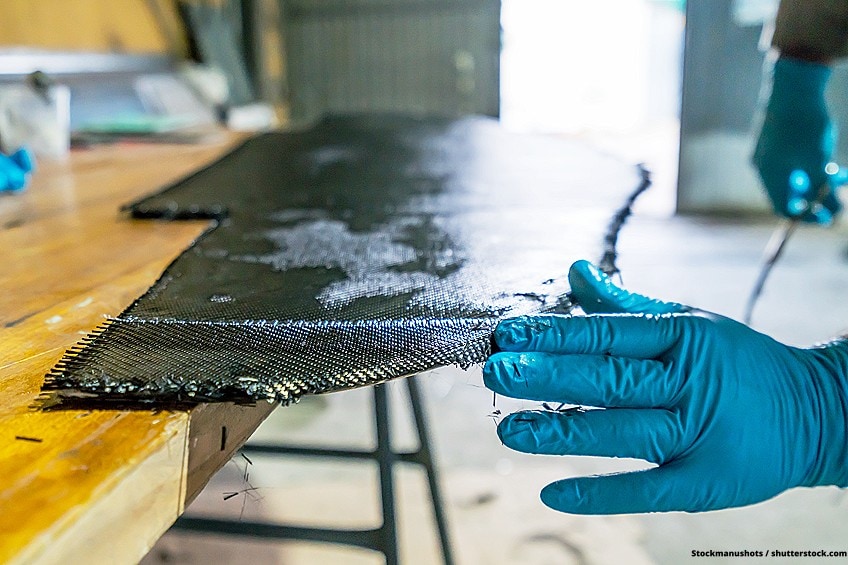
Polyester Resin vs Epoxy Resin
The reason that epoxy resin is more expensive is that it is a more durable and weather-resistant product. Epoxy resin won’t degrade as easily and is more resistant to cracks, peeling, or general wear. Polyester is still a strong material, but it is best used in objects that do not get put under as much stress.
Pros and Cons of Polyester Resin
In comparison to epoxy resin, polyester has its definite advantages and setbacks. Below is a summary of some of the pros and cons of this material.
Pros
- Polyester is much more cost-effective, which is especially noticeable when using larger quantities.
- The ratio of polyester resin and hardener can vary quite a bit, producing different results each time. This allows you to play around more with the curing time. With epoxy resin, this ratio needs to be much more precise.
- There is greater time flexibility when working with polyester resin.
- Polyester resin offers a good range of options to choose from for the reinforcing material. These include glass filament fabric, glass fiber mats, and glass fiber fabrics.
Cons
- Polyester resin produces quite a strong odor when it is being worked with, so it is best used outdoors.
- Polyester resin is not as mechanically strong as epoxy resin. It is less water-resistant, cannot hold up against as much force, and it does not work that well on smooth surfaces.
Things to Consider When Buying Polyester Resin
When buying polyester resin, there are a couple of different things to consider before choosing a product. These can make a big difference in the final result of the product that you use.
- Thickness Level: the glass fiber mats are available in a range of different thicknesses, with corresponding types of polyester resin. Make sure that the fiber and resin you choose work well together, and that they are suitable for your project
- Purchase Quality: Avoid cheap products and unknown manufacturers. With polyester resin, quality goes a long way. Never just pick the cheap option, as it could result in much more trouble along the way.

Equipment Needed for Working With Polyester Resin
Each project will have its own requirements and set of equipment needed. However, there are a number of different tools and utensils that can be used to aid in working with polyester resin. Below is a list of all the things you might need, although you should make sure that you get whatever you need for the job before you start.
- A suitable polyester resin
- Fiberglass sheets
- Acetone
- Priming wax
- Film release agent
- A brush or sponge
- A spatula
- A digital scale
- A fine layer resin or gel coat
- A roller or special venting roller
- Paint or pigments for coloring
- Protective gloves
- A syringe
- A knife or scissors
- A measuring cup
- Breathing mask
- Stirring sticks
We have also selected the best polyester resin, the best repair kit, as well as the best fiberglass cloth so as to make it easier for you to choose a suitable product for your project.
The Best Polyester Resin: 3M Bondo Fiberglass Resin
This is the best polyester resin for performing any number of repair, resurfacing, or rebuilding projects. You can use this resin by itself as a sealer, which is especially useful for rotten or damaged wood, or alternatively, you can use it with a fiberglass cloth, mat, or tape.
- For repairing, resurfacing and rebuilding a range of materials
- Can be used alone or with fiberglass tape, cloth or mat
- Can also be used as a sealer on damaged and rotted wood
This product will create a durable and lasting bond between the resin and the surface to which it is being applied. This resin is compatible with many different surfaces, such as fiberglass, wood, metal, and even masonry.
Its waterproofing formula makes this product ideal for a wide range of projects, from resurfacing your bathroom to building a boat. This product is simple to use and easy to mix, and can be sanded within just two hours. You can use almost any paint type to cover this resin, including gel- and water-based paints.
Pros
- Quick to harden
- Easy to use
- Great adhesion
Cons
- Difficult to measure
The Best Polyester Resin Kit: POLYMER PLANET Fiberglass Repair Kit
This kit includes a gallon of resin, a bottle of hardener, and a chopped strand fiberglass mat. The generous amount of materials in this kit means that it will cover a large surface area.
- Polyester resin comes with a fiberglass chopped strand mat
- Covers up to 15 feet of surface area
- Easy to use
This product has a longer working time, allowing you additional time to work with your polyester resin. It is slower to cure, however, although this is easily rectified by applying heat so as to speed up the curing time.
The fiberglass mat contains a combination of both loose and woven fibers, allowing it to work on flat or curved surfaces. It is of a lightweight material that enables it to be bent and folded where necessary.
Pros
- Lightweight, easy-to-use fiberglass mat
- Long working time
- Covers a large surface area
Cons
- Not enough resin and hardener
The Best Fiberglass Cloth: 3M Bondo Fiberglass Cloth
This fiberglass cloth is the ideal choice when working with polyester resin. The cloth possesses interlocking fiberglass strands so as to allow it to cover any holes or gaps. You can cut this cloth with a pair of scissors to achieve a particular size, and can use it for many different projects.
- Fiberglass allows for bridging holes and gaps
- Product repairs multiple surfaces
- Versatile cloth
You can use this fiberglass cloth for repairs on concrete, fiberglass, wood, metal, and many other surfaces to repair holes, gaps, and cracks. This cloth will provide the structural reinforment required for your polyester resin project, and is best used with a resin of the same brand. The thinner material of this cloth makes it easier to work with and easier to hide from view once completed.
This product is completely waterproof and can therefore be used on surfaces frequently exposed to moisture. Once the repaired area of fiberglass and resin has cured, you can sand the surface to become level and match the surrounding areas. You will be able to paint the surface once your polyester resin has cured.
Pros
- Ideal for stronger repairs
- Waterproof
- Easy to work with
- Can be used on multiple surfaces
Cons
- Fiberglass threads can come apart when cutting the cloth
How to Process Polyester Resin
There are a number of steps involved in working with polyester resin. It is important to fully prepare the surface before applying this resin. You can also choose to coat or laminate a surface with the resin, or you can use the poly resin to make a negative mold.
Preparing the Resin
- Make sure that you start with a clean working environment. Surfaces must be completely clean without any traces of dust. To make sure that the surface of what you are working with is clean, sand it down and clean it with acetone to remove excess oils.
- Add some release agent and perhaps a primer wax. This will allow for the set resin to be removed easily from the mold.
- The next step is mixing the resin. It is always a good idea to mix smaller quantities at a time, as this resin will dry in about 15 minutes.
- Figure out exactly how much hardener is required. You can do this by weighing the different components. Make sure to stir the polyester resin mixture well.
- Once stirred and transferred, the resin is ready to use. The resin can then be used however your project needs it. Common techniques are laminating and mold making.

Making a Negative Mold With Clear Polyester Resin
- Start with the master model, ensuring that it is completely smooth and clean. Any bumps or uneven surfaces will result in extra sanding work once the polyester has been cast.
- Use filler or plasticine to seal any joints. Any bumps or overhangs can be removed with a knife.
- Now, you can apply the coatings of wax and film release agent to the master model. After two layers, the gel coat can be applied.
- Avoid air bubbles when applying the gel coat. In order to do this, try to apply this coat in a single direction only.
- You can now add the glass fiber with the resin on top. Test the glass fiber to see if it gels by pulling threads.
- Now, it is just a case of applying layers on top of each other and letting the resin set. Once completely set, remove the structure from the mold.
Laminating With Polyester Resin
- Prepare the mat of glass fiber by brushing on the polyester resin and then laying the mats of glass fiber over this. When fresh coats of resin are applied, the fiberglass is softened. This allows you to shape it.
- There should never be white or glistening areas on the fiberglass. This points to too much or not enough resin being used.
- Once the painting is done, you will need to remove the air bubbles. This can be done by brushing or rolling them out. There are actually special ventilation rollers which have been specifically designed for doing this.
- Once the structure has set, it can be painted over once more with polyester resin. This helps to give it an additional weatherproof coating.
- Make sure that any mess or spills are cleaned up with acetone before the resin sets. Otherwise, removing it can be difficult.
The Curing Process
The amount of time the curing takes depends on a couple of factors. These include the brand and type of resin used, the size and shape of the item made, and the amount of hardener used. Be sure to cure the resin at the right temperature, as tempered resins and regular ones require different temperatures. Be sure to consult the product manual provided to find out about that particular resin’s curing information.
Tempering Polyester Resin
The curing process can be controlled and adjusted somewhat with the addition of heat. This increases the viscosity of the material to the gelling point until it eventually hardens into a solid form. Curing is faster at a higher temperature as it becomes more fluid, meaning that lower temperatures will take longer to cure. This could even take a number of days. To improve the structure of the cast item, you can use specially targeted heat additions. This is done in the tempering process, in order to increase the resin’s mechanical properties.
Using an Inhibitor
In some situations, the curing process needs to be delayed. This is done when there are large amounts of polyester resin to cure. To process this, an inhibitor is used. When adding an inhibitor into the scenario, the following guideline can be followed: Adding 0.2% doubles the processing time of the mixture, adding 0.5% multiplies it. However, it is not recommended to use an inhibitor with a gel coat, as this can affect the structure.
Coloring Polyester Resin
You can add paints and pigments to polyester resin for different effects. While this will make it look good, coloring polyester resin can affect the structure of the material. Adding pigments and paints to the resin will change the viscosity and affect the ratio of resin to hardener. This will make a difference in the curing process, resulting in differences in the material. It is important to use specially designed paints and pigments for this process.
It is also important to understand that when the resin cures, the color results do not always match up to the color you added in. Try to test this beforehand, as it can be frustrating to go through the whole project, only to realize that your coloring is not right once the resin has cured.
To add paint into the resin, you can either stir it in, slowly drip it in, or dump it in. Each method will have different effects. Whichever method you choose, be careful to pay attention to the viscosity of the resin while adding the paint. Also, know that the thicker the resin is, the harder it will be to properly mix paint through it. If the resin is too thin, it could cause streaks of color. Getting the consistency right is important.
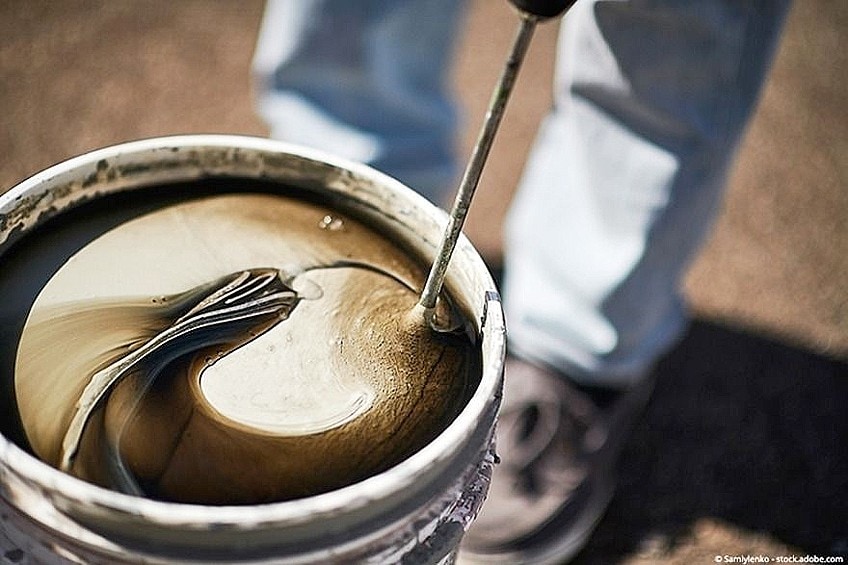
Safety Precautions for Handling Polyester Resin
Polyester fiberglass resin in its liquid state is a toxic chemical. This means that there are certain safety procedures to follow when handling it.
Firstly, make sure that the area you are working in is well ventilated. Preferably work with this resin outdoors. However, if you are indoors, open any windows and doors as the resin has quite a strong odor. Wearing a respirator mask is also important to avoid inhaling dangerous fumes. You also don’t want your skin to come into contact with this resin, so wear gloves, long sleeves, as well as safety goggles.
Once dried, polyester resin is incredibly difficult to remove. It is therefore important to cover any surrounding surfaces that you don’t want to mess on. If you do mess this resin, it can be cleaned off with acetone while still wet. If the resin spills over a porous surface such as wood, it cannot be removed.
If you are doing a cold curing process with ketone peroxide and cobalt accelerator, never add the two components to the resin at the same time. Always add them separately. This will help to avoid deflagration from happening.
Storing Polyester Resin
Once you are done using polyester fiberglass resin, you will need to make sure that you store it correctly. Put the resin in airtight containers. These need to be stored out of the light in cool places. Rather store the resin in its original container than transferring it into a new one. You can store resin for about six months if kept properly. However, hardeners do not have such a long shelf life. They can also absorb water if left unused for too long.
Tips and Tricks for Using Polyester Resin
- When creating things with polyester resin, right-angled shapes can present weak points. Try to avoid these if possible.
- Applying an additional layer after the resin has cured will help to weatherproof the object. This is great for waterproofing, and it also adds some UV protection too.
- Try to keep the project out of direct UV rays while curing, as this can affect the end structure.
- Having a larger surface area of the resin mixture allows you to work longer with it. When mixing the resin, try to use a container that is wider with more surface area.
- Another way to protect surfaces from resin is by applying a layer of release agent. Once the resin has dried over this, it can just be lifted off.
- Sometimes you will need to touch up the dried resin afterward to remove any bumps or uneven areas. You can do this with a saw, knife, sandpaper, or scalpel. Just be sure to wear a respirator mask, as this can cause harmful dust and fumes.
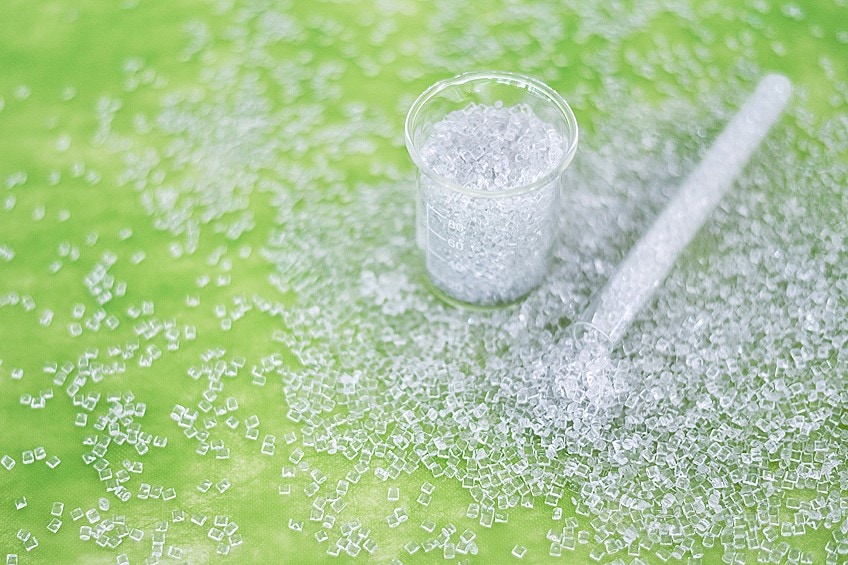
Frequently Asked Questions
What Do You Use Polyester Resin For?
Common uses of polyester resin include sheet molding, bulk molding compounds, and even in the toner of laser printers. It is often used as fiberglass resin to create various cast objects. Polyester resins are unsaturated synthetic resins. These are formed through a reactive process between dibasic organic acids and polyhydric alcohols.
Should You Use Epoxy or Polyester Resin?
Polyester is not as strong as epoxy. Generally, a polyester bond will be about 20% weaker than an epoxy one. Polyester resin is good for repairs that need to be gel coated, and for beginners starting out with this process.
Is Polyester Resin Dangerous?
Working with polyester resin involves a couple of small risks. The resin can cause irritations if it comes into direct contact with the skin. It can also produce harmful fumes and can pose potential fire hazards.
What Does Polyester Resin Look Like?
Polyester resins are pale and viscous liquids. There is often an addition of styrene to make the resin easier to handle.
Is Polyester Resin the Same as Fiberglass Resin?
Polyester fiberglass resin is often used as a resin to work with fiberglass. Fiberglass is the actual sheet that you paint the resin over to set it into place. Other resins, such as epoxy, can also be used with fiberglass.
Is Polyester Resin Flammable?
Yes, polyester resin is flammable. The flashpoint differs depending on the chemical makeup of the resin. However, it is always important to be cautious when working with this product.
Polyester resin is a great choice for any beginner looking to experiment. This is because the resin is cheaper, easier to work with, and it still produces quality results. Just be cautious of safety procedures when working with this substance. We hope that this guide has covered everything you need to know about polyester resin and that you have lots of fun getting started on your next project!
Larissa Meyer is a 32-year-old mother from Michigan and creative spirit since childhood. Her passion for painting and drawing has led her to an education as an illustrator and a career as a freelance graphic designer. She has a Bachelor of Fine Arts in Illustration and a degree in Graphic Design. Larissa is a talented artist who is able to master a wide range of styles and techniques to bring her artistic vision to life. Her greatest passion is currently fluid painting and epoxy resin art. Larissa’s love for art and her knowledge and experience in illustration make her the perfect Creative Director for our fluid-painting.com team. She is the creative head of our team and shares her passion and knowledge with our community through articles and tutorials.
As a mother of a 2-year-old daughter, Larissa also understands the importance of fostering creativity in early childhood. She uses her experience and knowledge to help other parents inspire their children and develop their artistic skills as well.
Learn more about Larissa Meyer and about us.

